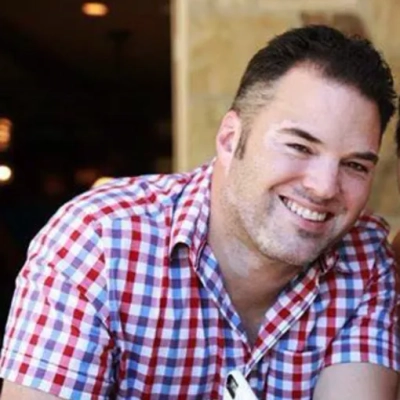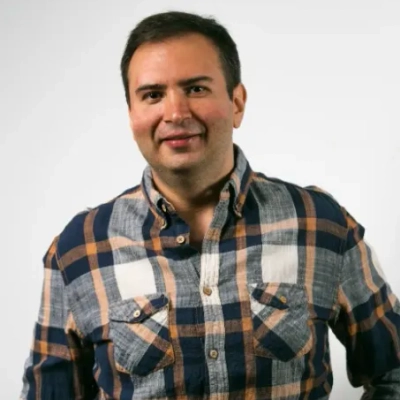Succession planning is a critical aspect of ensuring long-term business success. This article presents expert-backed strategies for creating a robust succession plan. From building a decentralized knowledge base to aligning financial structures with leadership transitions, these insights offer practical steps for maintaining business continuity.
- Build a Decentralized Knowledge Base
- Start Succession Conversations Early
- Pair Leadership Development with Financial Stability
- Implement a Mentorship Program
- Document Processes and Create Recurring Revenue
- Develop Internal Talent Through Stretch Projects
- Create a Capability-Based Succession Model
- Establish a Leadership Brain Trust
- Develop a Talent Pipeline
- Provide Supervised Leadership Opportunities
- Create Systems for Business Continuity
- Align Financial Structure with Leadership Transition
- Formalize a Continuity Plan
- Implement Knowledge Archaeology and Cross-Training
- Fund Buy-Sell Agreements with Life Insurance
Build a Decentralized Knowledge Base
When I started my company, the vision was bigger than me — it was about building a platform that could drive measurable sustainability outcomes for clients long after I’m gone. That mindset has shaped how I approach succession planning.
The first step I took was to document and decentralize critical knowledge. Too often, small and mid-sized companies rely on the founder’s mind as the “data center.” I wanted to ensure our strategies, processes, and client relationships lived in a shared system, not in my inbox. We built a centralized knowledge base — from ESG assessment frameworks to proposal templates — so future leaders could pick up where I left off without starting from scratch.
Next, I focused on developing internal leadership capacity early. I identified two team members with complementary strengths and gradually involved them in strategic decisions, client pitches, and budget reviews. The idea wasn’t to crown a “successor” today, but to give multiple people the skills and context to step up when needed.
From a financial health perspective, succession planning also meant creating financial buffers. We maintain a reserve that can sustain operations for several months even in a downturn. This gives any future leadership team breathing room to adjust without panic-driven decisions that can derail long-term strategy.
To me, succession planning isn’t a one-off event — it’s a culture. When you embed transparency, shared accountability, and documented processes into the DNA of your business, you’re not just preparing for the next CEO. You’re preparing the business to outlast any single person, including yourself.
 Mohd Adnan
Mohd Adnan
Founder & CEO, GreenEnviro Global Solutions (GEGS)
Start Succession Conversations Early
Succession planning conversations should occur at least 3-5 business quarters in advance to start screening and shortlisting internal candidates whose understanding aligns with the financial health and obligations of the business. Since managing financial health also requires competency and relevance in the markets, soft screenings for external market candidates should be considered. It’s critical to identify qualifying candidates that have direct and indirect responsibilities tying back to the company’s bottom line. The key part is to start hosting these conversations before a legitimate need surfaces because it’s only about timing. It lets the decision makers know whether the right candidate prospects are being groomed for a possible role transition.
Lack of planning will lead companies to make ad hoc decisions that can result in costing organizations losses by investing in the wrong people, as well as choosing candidates who fail to execute their new responsibilities with a mature understanding of the business and/or industry. Timely planning and communication can make succession planning easier to execute when the time comes for change.
 Sasha Laghonh
Sasha Laghonh
Founder & Sr. Advisor to C-Suite & Entrepreneurs, Sasha Talks
Pair Leadership Development with Financial Stability
Succession planning and long-term financial health are deeply intertwined — one ensures leadership continuity, the other ensures operational stability. In my experience, a strong succession plan is not just about identifying who will lead next, but ensuring that the business model, financial reserves, and growth strategy are robust enough to support that leader’s success. Without both elements in place, even the most promising successor could inherit instability.
My approach begins with building leadership capacity early. This means identifying high-potential team members and giving them opportunities to lead projects, manage budgets, and make strategic decisions well before they are considered for top roles. On the financial side, I focus on ensuring a diversified revenue stream, keeping operational expenses lean, and maintaining a healthy reserve fund to weather unexpected downturns. Another key step is embedding knowledge transfer systems — documenting core processes, client relationships, and strategic plans — so that transitions are not dependent on any single person’s memory or presence. This combination of leadership readiness and financial discipline creates an environment where the next leader can step in without losing momentum.
A few years ago, I worked on a phased succession plan for a growing consulting firm. We identified two potential internal successors for the CEO role and began a three-year leadership rotation, where each candidate took turns leading major strategic initiatives while shadowing the CEO in high-stakes negotiations. Simultaneously, we restructured the firm’s finances to reduce reliance on one major client, expanded into two new service lines, and built a six-month cash reserve. When the CEO eventually stepped down, the transition was seamless — revenues held steady, client retention remained above 95%, and the new CEO was able to focus on growth rather than crisis management.
Succession planning isn’t a standalone activity — it’s part of a broader strategy to safeguard a business’s longevity. By preparing leaders in advance, diversifying income streams, and ensuring financial resilience, you create a foundation where leadership transitions don’t derail progress. The most effective step I’ve taken is pairing leadership development with financial stability measures, so the next leader inherits both authority and the resources needed to succeed. In the end, it’s not just about who’s next — it’s about what they’re inheriting.
 Miriam Groom
Miriam Groom
CEO, Mindful Career Inc., Mindful Career Counselling
Implement a Mentorship Program
Succession planning and ensuring the long-term financial health of my business are crucial aspects. One step I’ve taken to address this is implementing a mentorship program within my company, wherein we pair experienced employees with up-and-coming talent. This helps with knowledge and skill transfer while also grooming future leaders. This approach ensures transitions are seamless when key employees retire or leave, helping to protect the business’s continuity and stability.
Additionally, I regularly review and update our financial strategies to adapt to changing market conditions and ensure sustainable growth. This proactive approach to succession planning and financial management helps to secure the future success of our business and maintain a strong foundation for long-term growth.
 Jack Nguyen
Jack Nguyen
CEO, InCorp Vietnam
Document Processes and Create Recurring Revenue
Succession planning is more than just passing on leadership, in my opinion; it’s about ensuring your business can run smoothly without your constant presence. One important step I’ve taken is to document all the key processes, such as how we onboard new clients, deliver projects, and set our pricing — in easy-to-follow procedures.
I’ve also trained two team members to handle different roles and implemented a profit-first accounting system. This has helped create a stable working environment and reduce reliance on any one person.
Furthermore, with AI changing the digital world, I’m focusing on utilizing automation and creating recurring revenue streams, such as retainers and service packages similar to SaaS. This move helps maintain steady cash flow and support long-term growth, even if I decide to take a step back one day.
 Tom Molnar
Tom Molnar
Business Owner | Operations Manager, Fit Design
Develop Internal Talent Through Stretch Projects
Succession planning is a critical component of our long-term business strategy that requires intentional development of internal talent. One specific approach I’ve implemented is assigning high-potential employees to challenging stretch projects that test their capabilities in real business situations. This method has proven valuable not only for identifying hidden talent within our organization but also for preparing potential successors to step into leadership roles when needed. The hands-on experience these projects provide gives candidates practical exposure to the complexities they would face in advanced positions while allowing our leadership team to evaluate their decision-making and problem-solving skills. This investment in developing our talent pipeline has strengthened our organizational resilience and contributed significantly to our long-term stability.
 George Fironov
George Fironov
Co-Founder & CEO, Talmatic
Create a Capability-Based Succession Model
We have stopped selecting successors solely based on job titles. Instead of simply looking for the “next VP of Ops,” we now map out the knowledge, skills, abilities, and other qualities (KSAOs) that truly drive results. These include thinking in terms of systems, negotiating across teams, managing gross margins, and handling incidents as they arise. We track all these skills in a “capability lattice” built in Notion, which we update quarterly based on insights from client profit and loss results and project reviews.
This approach helped us swiftly move a strategy lead into a revenue operations role when we recognized her talent for identifying pricing and forecasting patterns. It reduced her onboarding time from six months to just eight weeks, and we maintained our gross margin steady at 42% even as our team expanded. By focusing on capabilities rather than job titles, we identified about a third more potential candidates internally, as we were looking across all departments instead of remaining in silos. Many companies aspire to do this but lack the know-how. Gartner reports that only 9% of HR leaders are confident their managers could effectively run a skills-based model, which aligns with my daily observations.
We utilize AI solely to compile information such as performance notes, client satisfaction (NPS) scores, staff utilization, and logged issues. Then, a review panel of individuals familiar with the context makes the final decision, which helps us avoid unusual mistakes that might arise from relying on data alone. Approximately a third of HR managers still don’t trust AI results, so this approach keeps us both compliant and on track.
The entire system is transparent, replicable, and maintains our financial stability during leadership transitions. To implement it, we provide chosen successors with a special class of employee equity, as well as funded non-compete agreements. The equity is set to vest over five years and is tied to EBITDA and cash conversion, so as the company performs better, their stake grows. This arrangement has almost completely eliminated legal disputes over departures and actually retained two key managers during a two-year leadership transition. It also shaped behavior, as when EBITDA increased from 11% to 15%, the value of their equity automatically rose. We operate as a C-corp with multiple stock classes, allowing founders to retain voting control while successors gain real financial upside.
 Steve Morris
Steve Morris
Founder & CEO, NEWMEDIA.COM
Establish a Leadership Brain Trust
As a CFO for several years, I noticed that one of the most common mistakes businesses make is neglecting the human factor in succession planning. We devote so many resources to spreadsheets, forecasts, and market analyses, yet if we are not developing the individuals who make our companies successful, we are missing a key leverage point for sustainability.
DomiSource helps companies align long-term growth with leadership development. We cultivate emotional intelligence in our leaders and instill ownership at all levels of the organization.
One of the first measures I took to address leadership gaps was to start what I call a “leadership brain trust” — a diverse group of individuals from all areas of the company. These aren’t people who are simply trained to step into leadership positions; they’re trained to think critically and strategically about where we’re going, and what challenges lie ahead.
Developing leadership from within the company fosters sustainable growth rooted in common values and an aligned vision.
 Karen Watts
Karen Watts
Founder and CEO, DomiSource
Develop a Talent Pipeline
Succession planning is critical for the survival of every organization and for achieving financial success over time. I take a proactive management style in regard to leadership succession planning, to ensure we have the proper individuals in place to carry forth the mission of the organization with every leadership change that arises.
One specific action I have taken is developing a talent pipeline for the organization. This consists of identifying and documenting high-potential employees in the early stages of their careers, and providing them with the development activities that will help them grow. I have also made sure to maintain communication and relationships regarding their aspirations and future career development. By developing a talent pipeline internally, I can better ensure that when there is a leadership change, there will be little or no disruption to the organization or its financial viability.
Another thing I have done is to put resources into reserve assets and spend considerable time getting diversified revenue streams underway that provide viable business models in the event of economic downturns. This gives me the necessary resources to weather the storms while ensuring the organization remains viable for the long term.
 Deepak Shukla
Deepak Shukla
CEO, Pearl Lemon
Provide Supervised Leadership Opportunities
Effective business succession planning is based on redundancy and communication. Organizations where the future CEO will be making CEO-level decisions for the first time when they take the appointment are at substantial risk of future mismanagement and financial turmoil. We insist that all executive positions have 1-3 clear candidates in mind for eventual succession planning, and that all of those candidates are given opportunities to lead projects or make supervised decisions at the level of the appointment they are being groomed for. This supervised period ensures that when a candidate does take an executive office, they are well equipped with the skills to handle the role.
 Nick Henault
Nick Henault
Managing Director, BlueLion 1031
Create Systems for Business Continuity
Succession planning is not only about choosing a name to succeed you — it is about establishing systems that would allow the business to continue without you. One thing I did was to write out all the major processes step-by-step: how I analyze a deal, underwriting criteria, how I communicate with investors, and even how I put some loan terms together. I was not interested in having knowledge locked in my head.
By subjecting them to actual transactions, I have trained the members of the team how I think instead of merely shadowing. They talk, put money on the line, handle customers, and we conduct post-mortems. That is a cycle that creates judgment and trust.
On the financial front, I have maintained a lean debt profile and a predictable cash flow, at the expense of missing out on a few deals. I also do not want the business to be over-reliant on a single relationship; whether it’s referral sources, investors, or even team members.
The end game is freedom. You must be able to leave without the entire operation collapsing. Can’t do it? Then it’s not a business, it’s just a job.
 Jimmy Fuentes
Jimmy Fuentes
Consultant, California Hard Money Lender
Align Financial Structure with Leadership Transition
Over time, I’ve studied several approaches businesses take toward succession planning — some lean heavily on legal structuring, others focus more on leadership mentoring, and many leave it until far too late. One case that really stood out to me was a mid-sized retail business where the founder wanted to retire but had no clear roadmap.
Initially, they tried informal knowledge transfer, which created gaps and stress for the incoming leadership. What finally worked was a phased approach: mapping out responsibilities two years in advance, pairing tax restructuring with gradual operational handover. This not only minimized tax shocks but also allowed the next generation to gain confidence while the founder remained a steady presence.
I’ve learned that effective succession planning isn’t just about one tool — it’s about the right timing, a solid structure, and the people involved. While finances play a key role, success truly comes from aligning them with human readiness.
 Nitin Lilani
Nitin Lilani
Tax Accountant, KPG Taxation
Formalize a Continuity Plan
As a financial advisor, my approach to succession planning is with the same care I put into wealth management, which is to start from a place of a very clear long-term vision that we then tie into achievable financial goals. What I have done is put in place a formal continuity plan which identifies and develops a second-generation leader within the firm. This not only secures client relationships but also preserves the firm’s value, and we are able to keep service uninterrupted. Also, I am always looking at and adjusting our business financials, which means we maintain a clean, efficient operation and build up a cash reserve for when the unexpected happens. In the end, what we are doing is protecting the business’ health, its legacy, and client trust.
 Nathan Barz
Nathan Barz
Financial Advisor, Management Expert, SEO Founder and CEO, DocVA
Implement Knowledge Archaeology and Cross-Training
To be honest, succession planning gave me sleepless nights once we reached our initial million in revenue. The stark reality is that seventy percent of family businesses do not survive to the second generation, and even though I am not in a family business, the same principle applies: when you cannot relinquish control over YOUR company, you kill it.
My wake-up call came during one particularly grueling 80-hour work week spent debugging our recommendation algorithm. I realized that I had become the single point of failure in engineering architecture, business strategy, and client relationships. This is when I made the most difficult entrepreneurial decision of my career: walking away from daily coding.
I implemented what I termed “knowledge archaeology,” which involved systematically documenting all the important systems, relationships, and decision-making processes. We hired a VP of Engineering who was capable of questioning my technical judgments, not just following them. I have prepared comprehensive technical documentation of our AI models and have implemented a cross-training scheme in which the members of our team rotate through various duties.
Financially, I made changes to the way we distribute equity to motivate our key employees to think like owners. We also set aside an 18-month emergency fund, which most startups don’t bother with but is crucial in case of unexpected changes.
The planning wasn’t the most challenging part; it was the willingness to believe that the company could succeed without my involvement in every technical decision.
 Mircea Dima
Mircea Dima
CTO / Software Engineer, AlgoCademy
Fund Buy-Sell Agreements with Life Insurance
Succession planning is about protecting the business while ensuring family security. I focus on aligning the plan with long-term financial goals and putting cost-effective safeguards in place.
One step I have taken is helping a business owner set up a buy-sell agreement funded with life insurance. This approach was far more affordable than setting aside large amounts of cash or taking on debt. It allowed the surviving partner to purchase the other’s share without draining business resources, while giving both families peace of mind.
 Ben Batiste
Ben Batiste
Financial Professional













